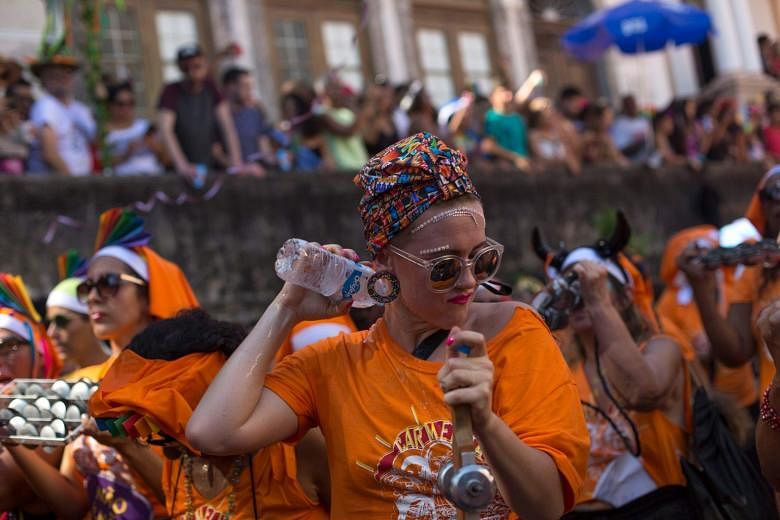RIO DE JANEIRO (AFP) - For residents of a Rio de Janeiro mental institute, carnival madness means more than just fun.
At a street party held this week for the patients of the Nise da Silveira Institute, 1,500 patients, staff and relatives dressed up in everything from tigers to harlequin costumes or pirates.
Also invited were dozens of neighbours from the modest neighbourhood of Engenho de Dentro, which is close to the stadium used in the 2016 Olympic athletics contests, but far from the usual carnival territory of southern Rio.
The institute used to be named the Pedro II Psychiatric Centre but was renamed after Brazil's most famous psychiatrist, da Silveira, who died in 1999.
A student of Carl Jung, she revolutionised mental health practices in Brazil, leading to the abolition of aggressive treatments like lobotomy. Instead, her methods focused on bringing patients back into society - an approach that continues today at the institute.
In 2001, staff turned an existing art-therapy workshop into a "bloco", the name for the amateur street parties that spring up all over Rio in different sizes during carnival season.
Like all "blocos", it needed a catchy name and this one was called "Loucura suburbana", roughly translating as "Madness on the outskirts".
"The goal was to get patients involved and to help the neighbourhood revitalise its carnival, since the 'blocos' have all gone to the tourist zones," said Ms Ariadne de Moura Mendes, who launched the project.
Before hitting the streets, everyone gathered in the courtyard in their costumes. Some came walking on stilts, others carried big colourful flags.
For Mr Andre Poesia, 42, it was time to warm up his vocal chords. Suffering from schizophrenia, he is one of the "bloco's" singers, who perform from a sound truck.
"Carnival is part of my life. Our 'bloco' shows that we must overcome prejudice. Crazy people are also capable of being happy and having fun," he said.
Ms Monica, another schizophrenia patient, was itching to get started.
"I feel free here," the 42-year-old cried out, wearing a fuchsia tutu and stopping passers-by to give them a kiss on the cheek.
Mr Silas Goncalves, wearing a flowery T-shirt, played drums, a key component of the samba music popular in "blocos". He is being treated for alcohol and cocaine addictions and says that carnival is good therapy.
"It is great to be among friends rather than shut inside," Mr Goncalves, 52, said.
"Thanks to the carnival, patients stop seeing themselves through society's prejudices, which consider them dangerous, useless or lazy," said Ms de Moura Mendes. "They can express themselves freely, they're real artists." .
Whether rehearsing the music or making costumes, the patients spend much of the year preparing the annual "Madness on the outskirts" party. There is a stock of extra costumes for those who do not have one kept in what used to be a chapel for holding wakes.
Mr Marcio Inacio, 49, is a former patient for depression, and this year came to build a huge and irreverent carnival effigy of Mayor Marcelo Crivella, depicting him with devil horns - a dig at a mayor who is an evangelical bishop and appears to disapprove of the carnival excesses.
It's also a dig at Mr Crivella for having ordered budget cuts which have hurt the city's already struggling health system. Among those feeling the pinch is the mental home's carnival: Government subsidies that previously helped it come to life have been axed.

